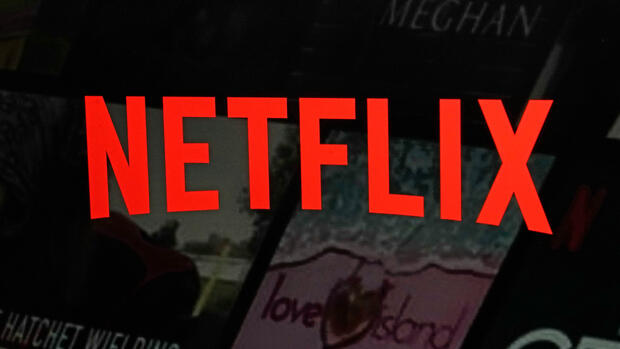The streaming giant has placed an increased focus on profitability in recent years.
(Photo: AP)
san francisco The streaming service Netflix wants to achieve a higher return with new fees. In Germany, an additional fee of 4.99 euros per month will soon be due if access is shared with people outside of your own household, as the Los Gatos-based company announced on Tuesday.
Affected users would be informed by email, a company spokesman told Handelsblatt. Netflix access is intended for one household. Further use is now only permitted for a fee. Although the streaming service had for years prohibited sharing access outside of one’s own household in its terms of use, violations were not punished.
Netflix doesn’t disclose how the company reviews account sharing. For example, the company can record the approximate location from which a user accesses the service. However, it is expressly permitted to consume Netflix films and series while traveling.
Netflix assumes that around 100 million households use the service with login data from others. The company has a total of around 232 million customers.
>> Suitable for this: How much does a Netflix subscription currently cost?
The company had initially introduced the additional fee for sharing accounts in some states as a test. In the pilot region of Canada, there were reports that a number of frustrated users were turning away from the company.
Netflix: The situation in Canada stabilized after the introduction of the fee
After a transition phase, the situation in Canada has stabilized, said Co-CEO Gregory Peters a few weeks ago: “We are now in a positive member and revenue position compared to before the rollout.” In the second quarter of this year, the additional fee for the Peters announced that sharing accounts would become the standard worldwide.
Analyst Bryan Kraft from Deutsche Bank rated the extra fee as a new professional driver for Netflix. “The concern was that the adoption of paid sharing in Canada, New Zealand, Spain and Portugal was not going well,” Kraft said. However, this concern has not been confirmed. On the other hand, the management’s calculations should work out and in the future some Netflix customers will be able to take out paid subscriptions who had previously watched for free through friends and relatives. This development should primarily be reflected in the business figures for the second half of 2023 and the whole of 2024, Kraft suspected.
Ad-supported Netflix accounts account for 25 percent of new signups
Alongside the fee for sharing accounts, Netflix management broke with another of the company’s traditions. Founder Reed Hastings had argued for years that Netflix would never have advertising. But then he had made a U-turn. Netflix now offers an advertising-financed subscription model.
Every fourth new customer (25 percent) now chooses the advertising-financed Netflix subscription, analyst Mark Mahaney from the asset manager Evercore ISI quoted from a Netflix presentation. The aim is to generate around ten percent of Netflix’s total sales or three billion dollars through advertising-financed offers.
>> Read also: Consumer advocates warn of EU tax for Netflix, YouTube and Co.
“The ad-supported offer should have a long growth phase,” Mahaney suspected. By 2025, Netflix is likely to reach its target of having 10 percent of its customers on ad-supported offerings, the analyst predicted. However, the growth is not likely to end there.
Currently, the customers on the advertising-financed subscriptions use the offer for just as long as the users who do not see any advertising – around two hours a day. This is an indication that the offer is well received. Users are currently shown around four to five minutes of advertising per hour. Netflix in Germany charges 4.99 euros per month for the subscription with advertising.
For years, Netflix had highlighted the rapid growth in subscription numbers as a success factor on the stock exchange. That’s changing now, observed analyst Mark Shmulik of investment bank Bernstein. “Net additions in the first quarter were weak, up 1.75 million,” the analyst wrote.
But investors are now looking more to other factors, such as new growth impetus from the ad-supported model or higher revenue from account-sharing fees. “I’ve had positive feedback on the recent quarterly numbers from most investors, despite ‘missing’ user growth expectations,” Shmulik said.
More: Disney is struggling with these problems on its 100th birthday
First publication: 05/23/2023, 21:00 (updated: 05/24/2023, 01:45).
